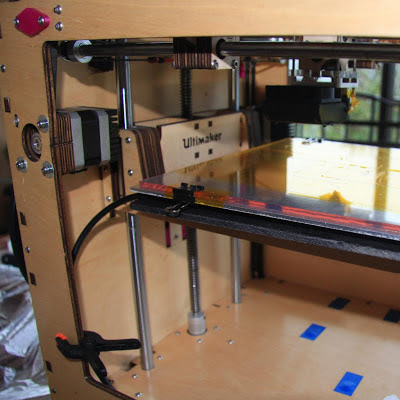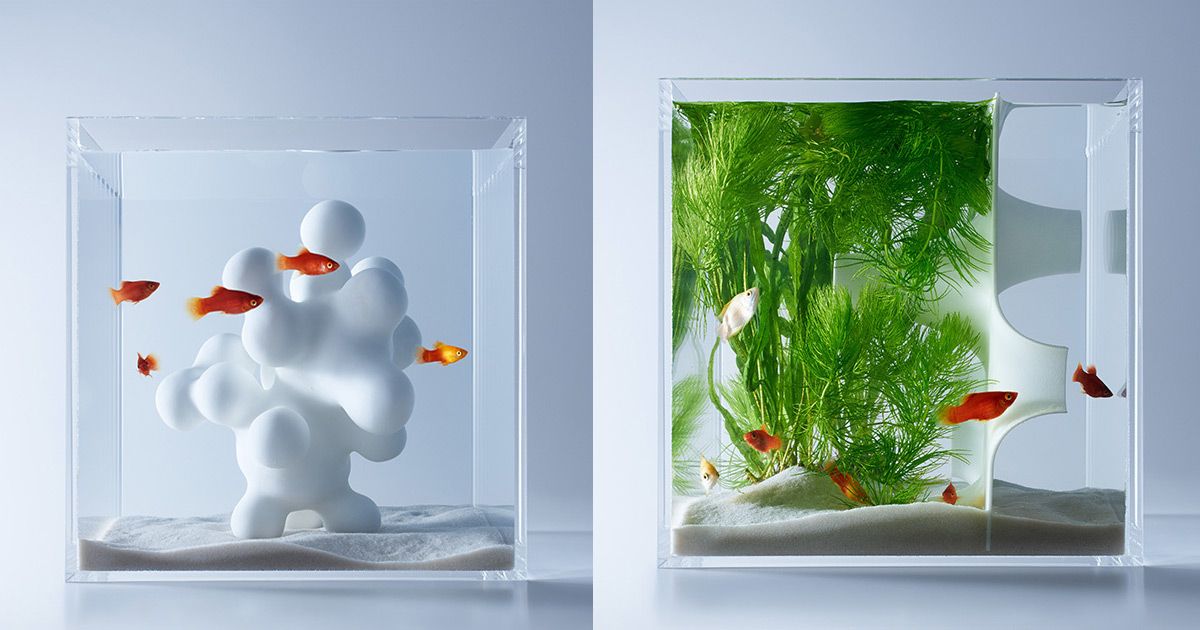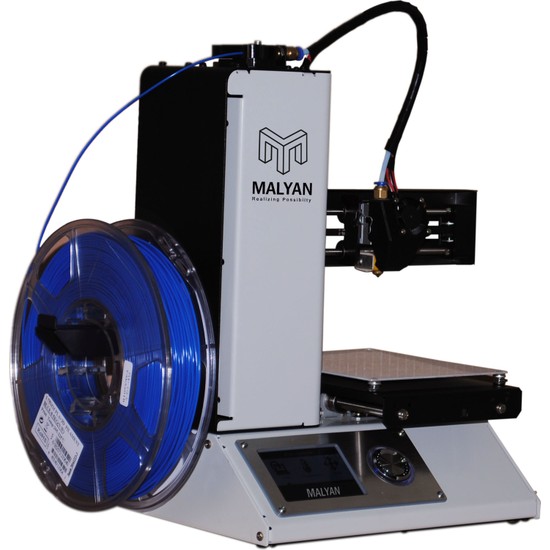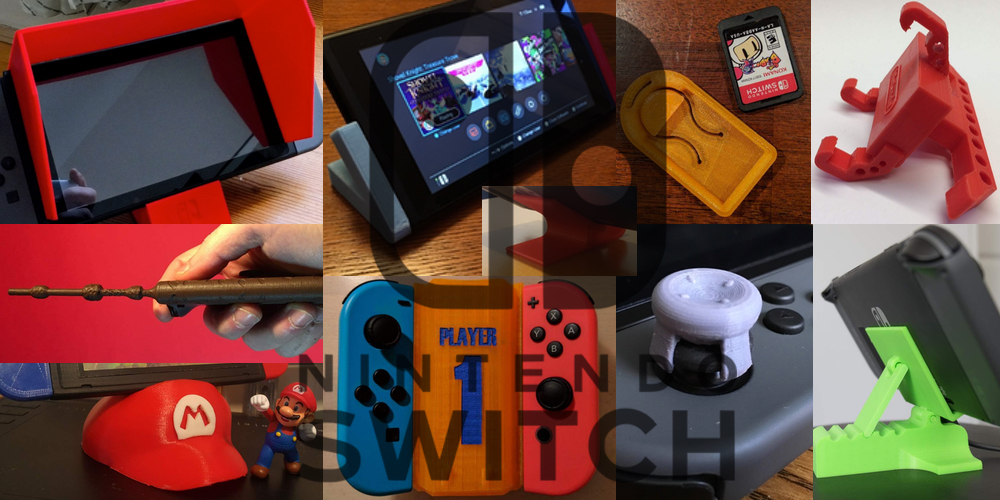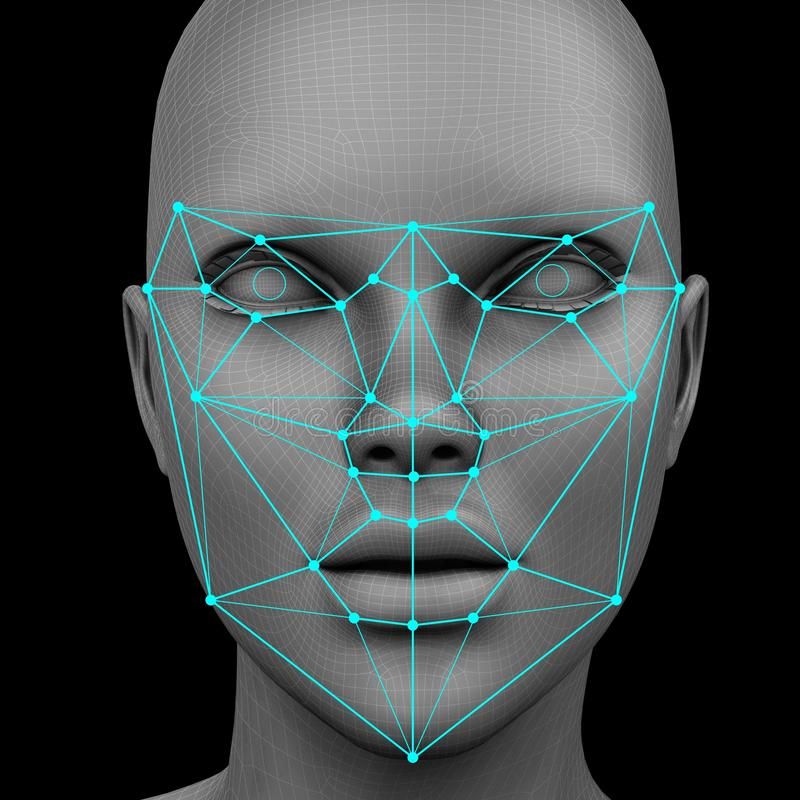Think 3d printers
3D Printing, CNC Machining & Molding Services in India
From single prototype to multiple end parts in just a matter of days
4M+
Parts Produced
69
Machines In-House
10K+
Customers Served
Trusted by:
INDIA’S LARGEST INTEGRATED
Digital Manufacturing Facility
Sheet Metal
Feel free to contact us if you wish to avail our services.
Who We Are
“From idea to a physical product” is a highly complex & error prone journey involving multiple technologies, processes, vendors, know-how and lot of capital. Many young innovators and MSMEs get overwhelmed by the complexity involved and drop off mid way. At THINK3D, we address this shortcoming by offering one-stop solution for all product development needs. We are a digital native manufacturing firm providing seamless experience to the next-gen innovators in their product development journey. In other words, we “enable innovation in India” through low volume production.
Why Choose Us
In an industry that is notorious for delays, cost overruns and low quality output, THINK3D has built robust systems and processes to mitigate those challenges faced by customers on regular basis. With an in-house ERP solution, highly trained workforce and state of art facility, we could minimize the delays and cost overruns. The recognition we received from XOMETRY, world’s largest on-demand manufacturing platform is a testimony for the quality of our service.
With an in-house ERP solution, highly trained workforce and state of art facility, we could minimize the delays and cost overruns. The recognition we received from XOMETRY, world’s largest on-demand manufacturing platform is a testimony for the quality of our service.
Previous
How THINK3D Works
Upload your designs online
Upload your CAD files in STL, STEP or IGES format using GET QUOTE functionality.
We start manufacturing
Once quotation is accepted we shall initiate the manufacturing process based on your requirements.
Timely door-step delivery
We take care of all the operations and logistics hassle, making sure that your parts are delivered before time.
Try Now
THINK3D Advantage
At THINK3D, we have wide range of capabilities offered through single, easy-to-use platform so you spend less time sourcing parts and more time on design innovation.
Our Manufacturing Processes
BELOW ARE VARIOUS ADDITIONAL SERVICES WE OFFER
With all 3D Printing technologies under one roof, THINK3D offers an industry-leading 3D printing service. Whether you need prototypes or production parts, we can make them for you on demand in as fast as a day. We have FDM, SLA, SLS, MJF, DMLS 3D Printing technologies all in-house. We also have state-of-art paint room and post processing section to give the perfect post processed finish to the parts. We are your one-stop-shop for accurate, precise, custom 3D printed parts at an affordable price.
Whether you need prototypes or production parts, we can make them for you on demand in as fast as a day. We have FDM, SLA, SLS, MJF, DMLS 3D Printing technologies all in-house. We also have state-of-art paint room and post processing section to give the perfect post processed finish to the parts. We are your one-stop-shop for accurate, precise, custom 3D printed parts at an affordable price.
Learn More
With a dedicated team of design professionals, THINK3D offers state of art 3D modeling services for both organic and inorganic models. We use Solidworks, Unigraphics, ZBrush, Maya tools to provide high quality design services. Whether you are an architect, interior designer, building contractor, product manufacturer, we have solution to suit your specific requirement.
Learn More
Vacuum Casting
At THINK3D, we offer a complete turnkey solution for creating master patterns and cast copies based on your CAD designs. We use SLA 3D Printing to make master patterns and then use these master patterns to make high-quality molds. We also offer a full line of finishing services including painting, sanding, pad printing and more. We’ll help you create parts for showroom quality display models, engineering test samples, crowdfunding campaigns and more.
We also offer a full line of finishing services including painting, sanding, pad printing and more. We’ll help you create parts for showroom quality display models, engineering test samples, crowdfunding campaigns and more.
Learn More
Injection Molding
With 14 Injection Molding machines present in-house, we provide injection molding service for various quantities and for different kinds of plastic materials. With the combined power of cutting-edge machinery and high-end technology, THINK3D exceeds customer expectations in terms of quality and delivery time. The infrastructure of THINK3D’s plastic injection molding manufacturing unit includes 14 high-precision, conventional injection molding machines with a range varying from 50 tons to 650 ton. All machines are supplemented with hopper driers, temperature controllers and hot runners.
Learn More
Sheet Metal Fabrication
At THINK3D, we have great capacity and high end machines to offer high quality sheet metal fabrication services at affordable price.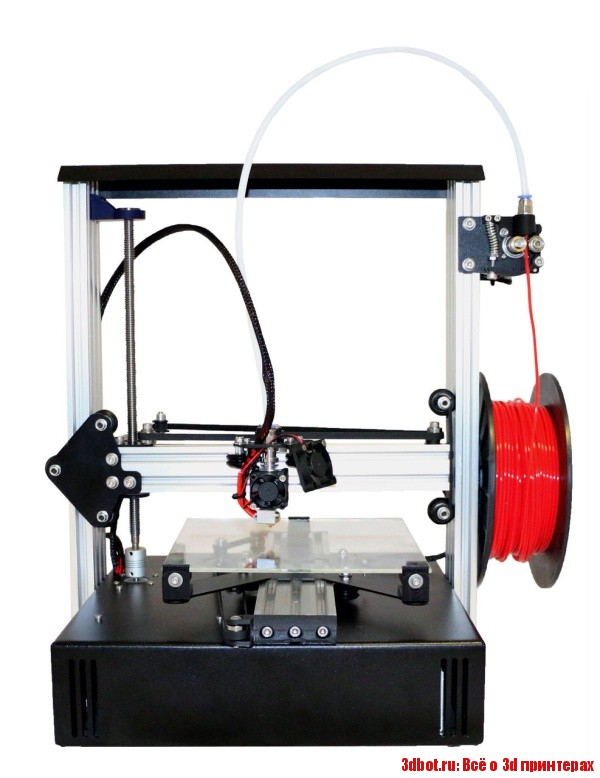 You also have access to our team of knowledgeable engineers to optimize part designs to trim your production time and launch products faster. THINK3D is your go-to company for all sheet metal fabrication services in India.
You also have access to our team of knowledgeable engineers to optimize part designs to trim your production time and launch products faster. THINK3D is your go-to company for all sheet metal fabrication services in India.
With state of art 3D Printing facility in-house, we offer FDM, SLA, SLS, MJF, DMLS 3D Printing services all in-house.
New Product Development
Have an idea but wondering how to convert it into a physical product? Struggling to get product form, fit, function, price optimised to be competitive in the market? Looking for one stop shop for all your product design and development needs? We are here to help you. With an experienced team of industrial designers from NID Ahmedabad, state-of-art manufacturing facility comprising 3D Printing, CNC Machining, Vacuum Casting, Injection Molding technologies and deep tech expertise in AI/ML, IOT, PCB schematic, fabrication, assembly and software development, we can help you realise your product development needs. Contact Us to learn more.
Contact Us to learn more.
Contact Us
OUR VALUABLE
Clients
Think3D has been a great partner for us in supplying COVID-19 test cartridges on-time despite the pandemic challenges. When we came up with a new requirement needing a workforce of more than 25 people, think3D took up the challenge and arranged the workforce within 2 days. I highly recommend think3D for any manufacturing needs.
Jay Krishnan
Production In-Charge, Molbio
As a professor doing research on new materials, I needed a strong industry partner to assist us. think3D perfectly fit that bill. think3D team is highly knowledgeable on all manufacturing technologies and the team is very prompt in responding to all our requests. My research has been very successful, thanks to think3D team.
Dr. Karthik Chetan V
Asst. Professor, BITS Pilani
We found issue with one part at the time of assembly and needed a quick replacement. think3D team has quickly responded to our request, redesigned the part and printed it using metal 3D Printing and delivered in 3 days time. The part came out really well and the design was better than that of the actual one.
think3D team has quickly responded to our request, redesigned the part and printed it using metal 3D Printing and delivered in 3 days time. The part came out really well and the design was better than that of the actual one.
Rama Krishna
Senior Manager (IMM), BDL
ARTICLES
Latest News
3D Printing & Rapid Prototyping Services in India
- THINK3D offers an industry-leading 3D printing service. Whether you need prototypes or production parts, we can make them for you on demand in as fast as a day. We are your one-stop-shop for accurate, precise, custom 3D printed parts at an affordable price.
Why Choose Think3D For
Additive Manufacturing Services
Turn your ideas to reality with our full fledged 3D Printing, CNC Machining, Casting & Molding service capabilities. Our facility is equipped with entire range of 3D Printing technologies, 10 CNC Machines, 2 Injection Molding Machines and have a passionate team to serve you.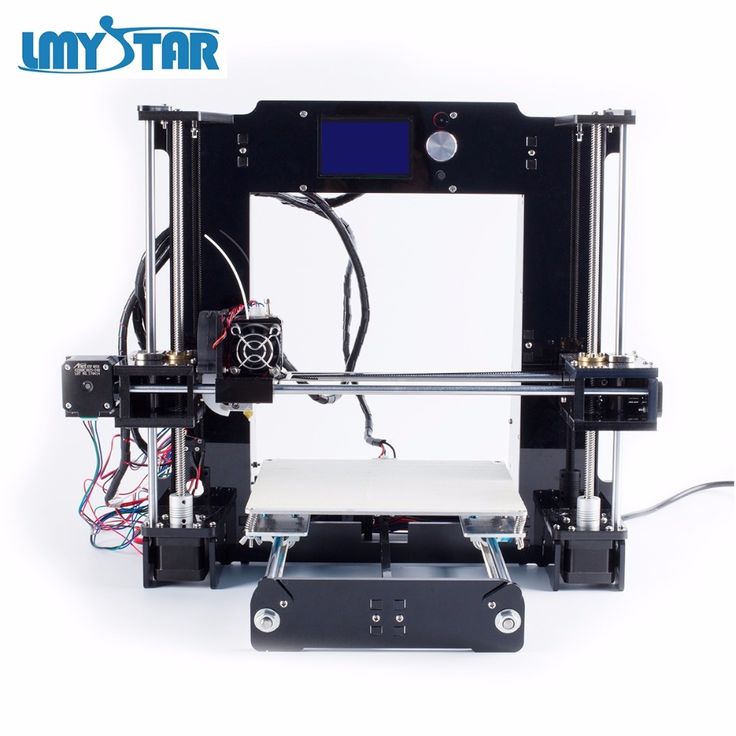
CORPORATE BROCHURE
Quick Online Quote
Upload files in Get Quote section and get quote within 4 hrs
Technical Competency
Technically qualified team in various mfg. technologies
Competitive Pricing
Highly competitive price and bulk discounts also available
NDA & IP Protection
All designs and data are kept in highly secure private server
Technologies
We have in-house
Fused Deposition Modeling
Fused Deposition Modeling (FDM) is a commonly used 3D printing technology and is famous for its possibility to print large parts, accuracy, wider material selection and competitive cost. With more than 15 FDM 3D Printers of various brands present in-house, think3D offers the best quality FDM 3D Printing service with least turn around time. We also offer various post-processing services too.
Stereolithography
Stereolithography(SLA) is a powerful 3D printing technology that give extremely accurate parts which can be used for direct end-use and rapid prototyping. think3D has 6 SLA / DLP / MJF machines of various resolutions and build volumes in-house. With these machines, think3D can offer some of the best resin based 3D Printing solutions to customers across various industries.
think3D has 6 SLA / DLP / MJF machines of various resolutions and build volumes in-house. With these machines, think3D can offer some of the best resin based 3D Printing solutions to customers across various industries.
Selective Laser Sintering
Selective Laser Sintering (SLS) is one of the famous 3D printing technology which gives highly accurate and durable end use products. It is also one of the most inexpensive for industrial 3D printing as it can build parts in bulk without the support structure requirement. think3D has one EOS P110 machine in-house. We have the lowest turn-around time and highly competitive price in the market for powder based 3D Printing services.
Direct Metal Laser Sintering
Direct Metal Laser Sintering(DMLS) is a metal 3D printing technology which selectively fuses fine metal powders. think3D has one EOS M290 machine in-house to offer various metal additive manufacturing service. We can 3D Print various metals like Chromium Cobalt, Tool Steel, Maraging Steel, Aluminium
Color Jet Printing
Color Jet Printing (CJP) is the most exciting 3D printing technology as the parts printed are like real life models. think3D has one Projet 660 PRO 3D Printer from 3D Systems. We can offer various full color miniatures through this machine. We have the lowest price and quickest turn around time in the market.
think3D has one Projet 660 PRO 3D Printer from 3D Systems. We can offer various full color miniatures through this machine. We have the lowest price and quickest turn around time in the market.
Poly Jet Printing
Poly Jet Printing (PJP) is a rigid photopolymer 3D printing technology that produces high-detailed models. This process injects liquid photopolymer material and cures it layer by layer using UV light. Polyjet is known for its speed and excellent surface finish. It is also capable of printing in multiple materials at once. think3D has one PJP machine in-house to offer the unique ability to print parts of multiple materials and colors, with different mechanical or physical properties.
Multi Jet Printing
Multi Jet Printing(MJP) is a 3D printing technology used to build parts, patterns, and molds with fine feature detail to address a wide range of applications. think3D has one MJP machine in-house to produces micro-detail wax patterns with outstanding surface quality and extremely fine features, ideal for intricate direct investment casting applications, such as jewelry.
Multi Jet Fusion
Multi Jet Fusion (MJF) is a powerful technology that produces high accurate and durable parts at fast speeds when compared to other powder bed fusion technologies. think3D has one MJF machine in-house for models which require crisp textures, surface details or labels. It’s also a good material for highly complex parts with lattices and hinges.
OUR VALUABLE
Clients
Think3D has been a great partner for us in supplying COVID-19 test cartridges on-time despite the pandemic challenges. When we came up with a new requirement needing a workforce of more than 25 people, think3D took up the challenge and arranged the workforce within 2 days. I highly recommend think3D for any manufacturing needs.
Sanket Srivatsav
Production In-Charge, Molbio
As a professor doing research on new materials, I needed a strong industry partner to assist us. think3D perfectly fit that bill. think3D team is highly knowledgeable on all manufacturing technologies and the team is very prompt in responding to all our requests. My research has been very successful, thanks to think3D team.
My research has been very successful, thanks to think3D team.
Dr. Karthik Chetan V
Asst. Professor, BITS Pilani
We found issue with one part at the time of assembly and needed a quick replacement. think3D team has quickly responded to our request, redesigned the part and printed it using metal 3D Printing and delivered in 3 days time. The part came out really well and the design was better than that of the actual one.
Rama Krishna
Senior Manager (IMM), BDL
Applications Of 3D Printing
Turn your ideas to reality with our full fledged service capabilities. No restrictions on creativity!
Functional Prototypes New Product Development Research Aids Educational Projects Miniature Scale Models Spares & Replacements Arts & Crafts Custom Gifts & Mementos Batch ProductionFew Case Studies
Frequently Asked Questions
Is 3D printing just for rapid prototyping?
3D printing is an essential tool for accelerating the prototyping process. However, its applications stretch well beyond prototyping to other facets of the product lifecycle.
However, its applications stretch well beyond prototyping to other facets of the product lifecycle.
• Manufacturing – Design freedom and economically viable low-to-mid-volume production enable new possibilities for product design and operational improvement. Applied in combination, these two capabilities have the potential to transform decades-old supply chains and business models.
• Tooling – 3D printed tooling advantages include on-demand production, customization, digitization of designs and unrestrained design flexibility. This cuts out costly suppliers, compresses lead times, enables digital warehousing and accelerates manufacturing floor productivity.
• Sales and Retail – 3D printing gives retailers the ability to innovate, delivering highly customized, on-demand products and new experiences such as “co-designed” items developed in conjunction with the customers.
• Aftermarket Supply – Businesses that embrace 3D printing for spare and replacement parts can replace warehouses of spare parts with 3D printers or a contract 3D printing service bureau to produce parts on a just-in-time basis.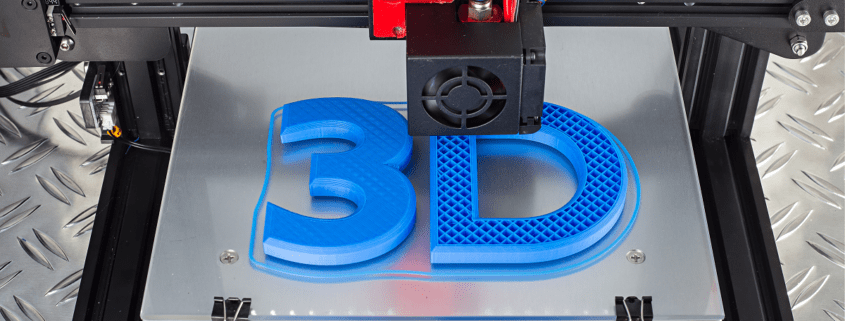
How does 3D printing impact product development and speed to market?
3D printing accelerates the process by reducing the time and cost associated with prototyping and refining the design. Many more 3D printed prototypes can be produced in the time needed to mold or machine them and for much less cost. Highly realistic prototypes printed on full-color multimaterial printers look like the final product, cultivating faster and better decisions.
What can designers do with 3D printing?
3D printing gives designers the capability to drastically shorten the design process compared to traditional methods of hand-modeling or outsourcing to model shops.
Keep the design process entirely in-house. With 3D printing, designers gain full control over the design process. Creating models in-house saves the time associated with outsourcing. More timeline flexibility empowers designers to try new ideas and iterate often, resulting in better products that stand out.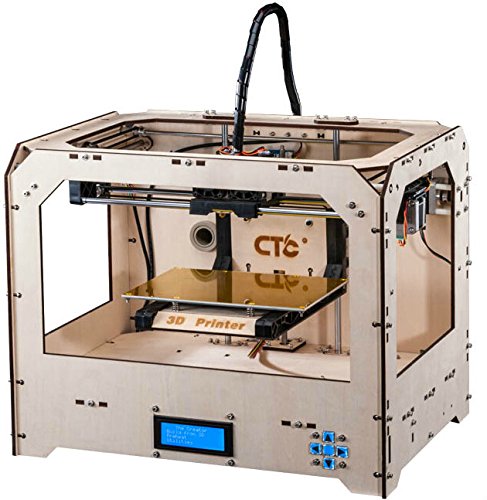
Prototype faster and smarter. Outsourcing is often too expensive and time-consuming to allow iteration of more detailed prototypes, especially models that incorporate CMF (color-material-finish). The speed and streamlined workflow of 3D printing gives designers the freedom to create dozens of detailed prototypes while reducing the time to arrive at the optimal design.
Create beautiful, highly detailed models. With full-color, multimaterial printing, designers can create prototypes that look, feel, and even function like the real thing in just a few hours. The ability to assess the color, texture, and ergonomics of a product means better feedback and faster approval from clients.
Is 3D printing a replacement for conventional manufacturing technology?
3D printing is not a wholesale replacement for existing manufacturing methods like molding and machining. Its benefit lies in supplementing these other technologies at points where they can’t compete. For example, 3D printing’s additive nature is able to make structures that aren’t possible with machining or molding. It also makes low- to mid-volume production economically viable because there’s no need for the tooling investment. Similarly, it’s much faster to get started, which is why GM turned to 3D printing to retool its production line to produce ventilators in the pandemic. In short, 3D printing is another tool in the toolbox, but one that offers key benefits over traditional manufacturing practices when used strategically.
For example, 3D printing’s additive nature is able to make structures that aren’t possible with machining or molding. It also makes low- to mid-volume production economically viable because there’s no need for the tooling investment. Similarly, it’s much faster to get started, which is why GM turned to 3D printing to retool its production line to produce ventilators in the pandemic. In short, 3D printing is another tool in the toolbox, but one that offers key benefits over traditional manufacturing practices when used strategically.
What are the pros of using a service bureau?
Contracting with a service bureau to make your 3D printed parts is a good way to get introduced to the benefits of the technology. You gain the expertise and insight of a 3D printing specialist who can possibly guide you in optimizing the use of the technology for your specific purposes. Your out-of-pocket expenses are usually lower initially since you avoid the up-front expense associated with a printer purchase.
Which industries use it and how?
Additive manufacturing shows promise for the defense, energy, aerospace, medical and commercial sectors. Its alternative approach to machining, forging, molding and casting makes it a good choice for rapidly making highly customized parts. The technology also shows promise for creating parts on site, such as at forward-stationed military bases. Because of its potential, many companies are using the technology to get themselves into a position to use it. The growing field of companies using the technology includes makers of machine parts and novelty items.
How can THINK3D help me?
We’ve been in the business of helping customers solve problems for over 8 years with our 3D printing solutions. We can help you determine what technology is right for your application, whether a printer or a service bureau is more appropriate, as well as answer any questions you might have.
Are companies using Additive Manufacturing?
Yes, lots of different companies across a range of industries use additive manufacturing, including the medical industry, aerospace and more. Additive manufacturing is particularly useful for making complex or bespoke parts – whether for a new application or to replace an old part that may no longer be available.
Additive manufacturing is particularly useful for making complex or bespoke parts – whether for a new application or to replace an old part that may no longer be available.
How long does the 3DP process take?
The printing time takes in a few factors, including the size of the part and the settings used for printing. The quality of the finished part is also important when determining printing time as higher quality items take longer to produce. AM can take anything from a few minutes to several hours or days – speed, resolution and the volume of the material are all important factors here.
How do I find out if AM is right for me?
You probably know the answer to this one by now! It takes a discovery to analyze your current parts and determine whether or not there is an ROI for you at this point. If a basic ROI exists, then you will also profit from other AM benefits such as:
- Freedom to design parts and sub-assemblies for the design, not for the manufacturing processes (DFM*)
- Have inventory on demand for both production and spare parts
- Eliminate costs of inventory and the time lag of supply chains
And!
- Gain the ability to quickly prototype with the same process with which you will manufacture — true rapid prototypes!
Customer Reviews
Comments
3D Printers / Peripherals
Author: Konstantin Afanasiev
Computer technologies are increasingly merging with real life. However, the line between real reality and reality, so to speak, computer or virtual remains. Moving an object from one plane to another is not easy. Of course, if we are talking about text, pictures and other two-dimensional things, then printers and scanners have long made such an exchange a simple and completely ordinary thing. However, in the case of three-dimensional physical objects, everything is much more complicated. nine0003
However, in the case of three-dimensional physical objects, everything is much more complicated. nine0003
Even technologies that allow you to see a three-dimensional computer model in real volume cannot be called very common (although they are already at the user level both in terms of price and availability). As for the possibility of touching such a model and interacting with it, then so far there is no question of home or amateur use.
And I think that most readers have not even thought about technologies that allow reproducing the model in real material. At best, they heard something out of the corner of their ear. This article will be devoted to such technologies. So to speak, for the general development. nine0003
Let's start with the question, why is this needed? Why do you need to take a three-dimensional model of something and make a real object out of it? It turns out there are plenty of uses. The first, and most basic, in the industry - mainly for rapid prototyping - is to see how the model will look in the material. According to a spokesman for the aerospace company Pratt & Whitney, "the cost of developing a complex product can be greatly reduced if engineers are asked to look at a real part instead of dozens of drawings." nine0003
According to a spokesman for the aerospace company Pratt & Whitney, "the cost of developing a complex product can be greatly reduced if engineers are asked to look at a real part instead of dozens of drawings." nine0003
In addition, various tests can be carried out on the finished model even before the final product is ready. What's more, prototypes allow you to perform tests that you can't do on a finished product. For example, Porsche used a transparent plastic model of the 911 GTI transmission to study oil flow during its development. However, the main thing is that such a model can be made very quickly - and in our time of high speeds this is very important. Actually, there is a whole industry of rapid prototyping (Rapid Prototyping - RP), which is precisely engaged in the development and use of volumetric printing technologies for these purposes. nine0003
However, prototypes are not everything. The next step is rapid production. Already, some RP technologies allow the manufacture of finished items from various materials.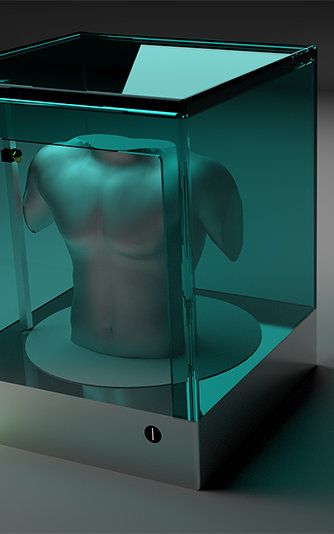 This is an ideal solution for small-scale production, since the standard manufacturing process makes it possible to do anything (within reasonable limits, of course) in a relatively short time. Again, some of the 3D printing technologies allow you to quickly produce molds - well, then the production process is already rolled out. True, prices and availability (as well as the choice of materials) still leave much to be desired. nine0003
This is an ideal solution for small-scale production, since the standard manufacturing process makes it possible to do anything (within reasonable limits, of course) in a relatively short time. Again, some of the 3D printing technologies allow you to quickly produce molds - well, then the production process is already rolled out. True, prices and availability (as well as the choice of materials) still leave much to be desired. nine0003
But in the future, who would refuse the opportunity to quickly make some necessary trifle at home, instead of looking for it in stores or ordering a bottle from a familiar locksmith Uncle Vasya. Actually, here you can draw a direct analogy with systems based on FPGA (that is, on programmable logic), which have made a real revolution (although it may be imperceptible for non-specialists) in electronics. FPGA technology allows you to describe electronic circuits on a computer, and then quickly implement everything described in a standard chip. The same fast prototyping, but for electronics.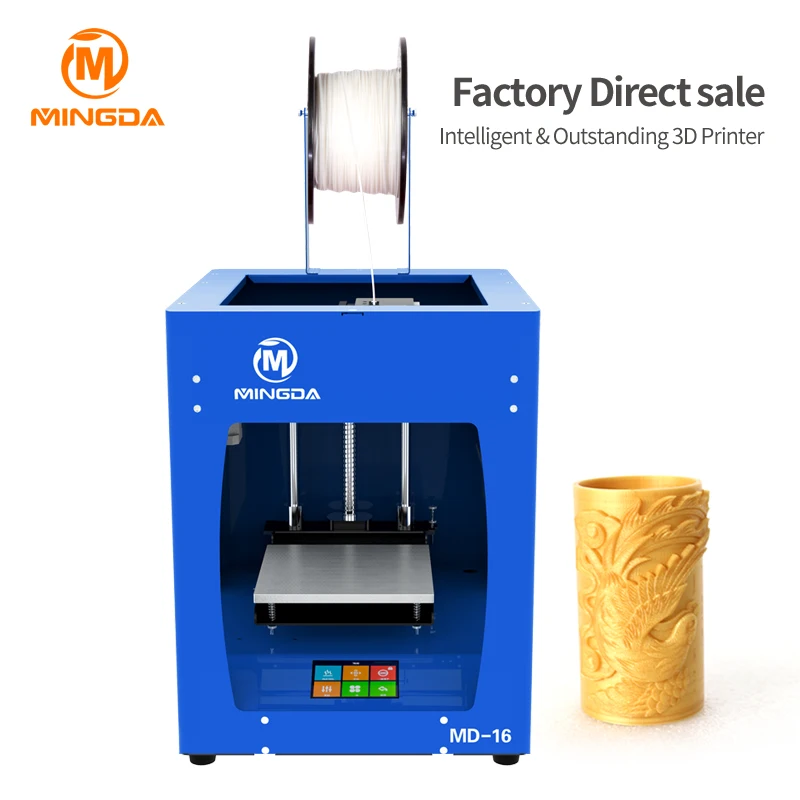 Moreover, if earlier all this was quite expensive and complicated, now, if desired, you can make anything - a microprocessor, DSP, microcontroller - practically at home. Volumetric printing will allow, in the future, to do the same with conventional production. However, it's time to move on from romantic dreams to the harsh truth of life and what 3D printing is now. nine0003
Moreover, if earlier all this was quite expensive and complicated, now, if desired, you can make anything - a microprocessor, DSP, microcontroller - practically at home. Volumetric printing will allow, in the future, to do the same with conventional production. However, it's time to move on from romantic dreams to the harsh truth of life and what 3D printing is now. nine0003
Micromachines
The simplest, cheapest and most affordable devices that claim to be a 3D printer actually have almost nothing to do with printers. We are talking about machine tools with program control. However, if you imagined some kind of screw-cutting monster the size of half a room (I immediately recall labor lessons or the Code of Criminal Procedure), then this is in vain. We are talking about very compact desktop machines, which are called desktop CNC machines (CNC means computer numerically controlled, or, in Russian, a machine with numerical control). These devices can be controlled directly from CAD programs and cut, cut and drill models in the material that are developed in these programs.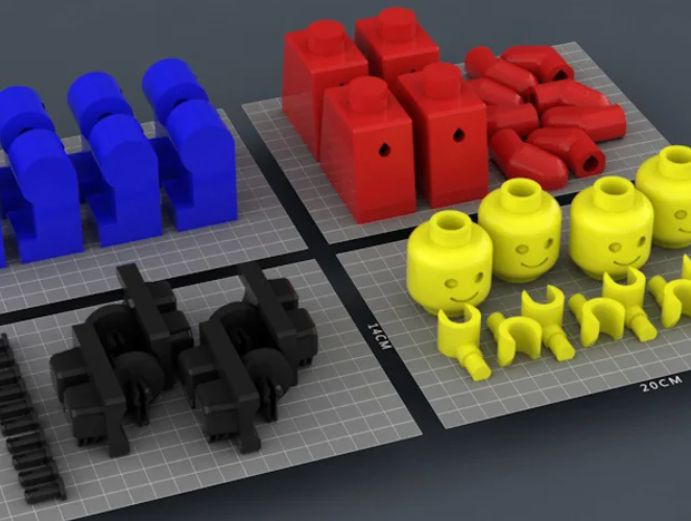 Materials can be almost anything - from plastic or wood to soft metals (bronze, aluminum). For example, the MicroMill 2000 Desktop Machining System from MicroProto, shown in the picture (this is called a CNC milling machine), connects to a computer instead of a printer, can process a volume of 23x14x15 cm and is able to position the tool with an accuracy of hundredths of a millimeter. Machines aluminum and even mild steels. This wonderful thing costs a little less than $ 2,000. nine0003
Materials can be almost anything - from plastic or wood to soft metals (bronze, aluminum). For example, the MicroMill 2000 Desktop Machining System from MicroProto, shown in the picture (this is called a CNC milling machine), connects to a computer instead of a printer, can process a volume of 23x14x15 cm and is able to position the tool with an accuracy of hundredths of a millimeter. Machines aluminum and even mild steels. This wonderful thing costs a little less than $ 2,000. nine0003
Desktop multifunctional machine, connects instead of a printer
Part model and finished part made on a CNC machine
Another example of such devices is Roland's MDX line of machines. The older models are designed for semi-industrial use and cost, respectively, around $20K. But the MDX-15 machine is estimated at about $ 3,000 and it can already be categorized as amateur and even home equipment. The MDX-15 also allows you to process various materials up to aluminum and bronze, has a working area of 15x10x6 cm and an accuracy of the order of hundredths of a millimeter.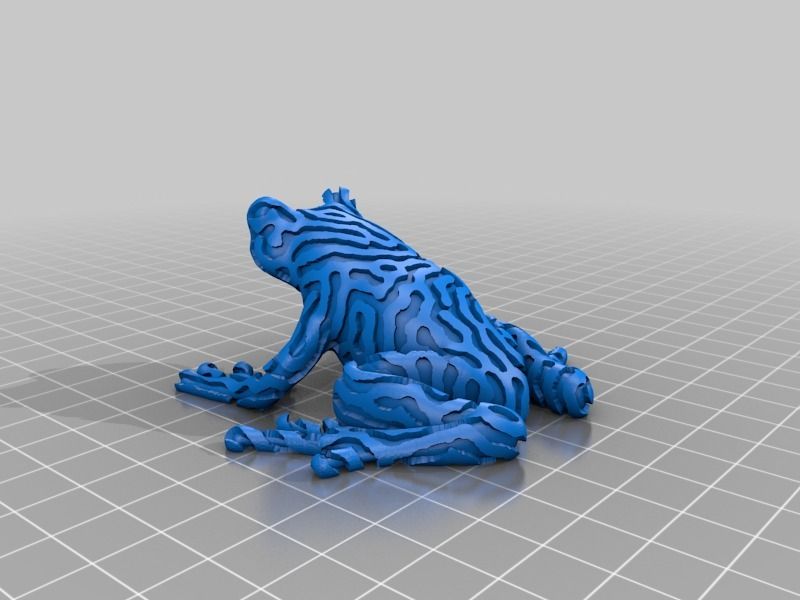 It connects to a computer via a serial port. By the way, Roland supplies a special piezoelectric scanning head to its machines, which allows you to do the reverse transformation - translate real objects into computer three-dimensional models. nine0003
It connects to a computer via a serial port. By the way, Roland supplies a special piezoelectric scanning head to its machines, which allows you to do the reverse transformation - translate real objects into computer three-dimensional models. nine0003
Roland MDX 20
Machine at work
There are three main types of CNC machines: routers, mills, and lathes. What a lathe is, I think everyone understands that. And what is the difference between router and mill is easiest to understand from the figure. Of the two devices described above, the first is mill, and the second is router. By the way, machines with four degrees of freedom are also produced - to a certain extent combining the capabilities of mill and lathe. All this technique can be used both for the direct manufacture of objects according to three-dimensional models, and for the preparation of molds for casting - this significantly expands the scope.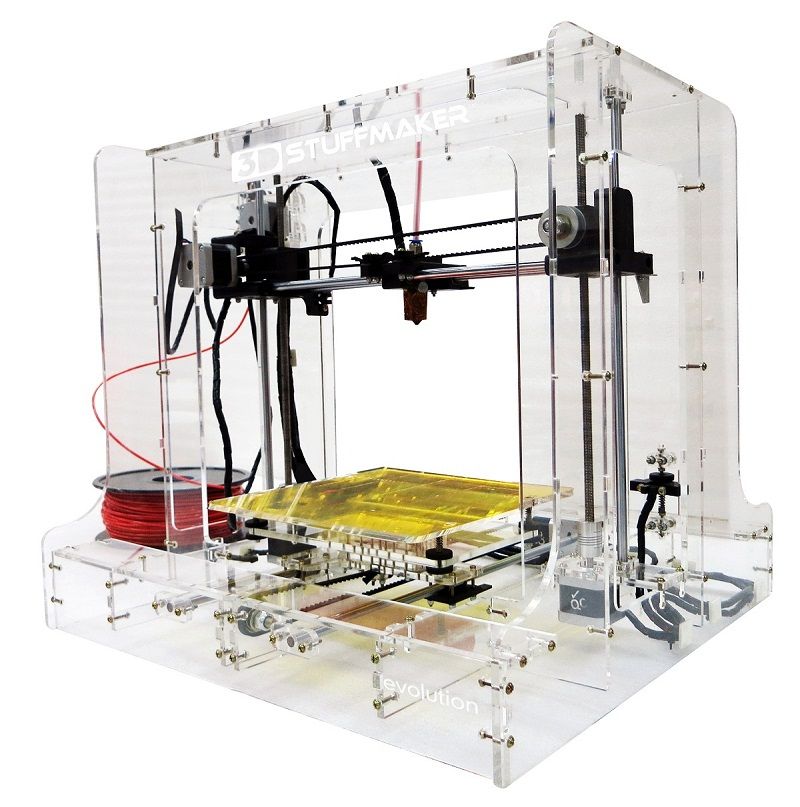 Other possible uses are engraving, fast PCB fabrication (no photomasks or etching), modeling (anyone who has built a model airframe at least once must hate jigsaw sawing for the rest of their lives), and a host of others. Well, you can get more information on desktop CNC machines at www.desktopcnc.com. nine0003
Other possible uses are engraving, fast PCB fabrication (no photomasks or etching), modeling (anyone who has built a model airframe at least once must hate jigsaw sawing for the rest of their lives), and a host of others. Well, you can get more information on desktop CNC machines at www.desktopcnc.com. nine0003
What are the differs of CNC-Mill and CNC-Router
Flashcut
3D 3D
Laser Laser
Laser
and now go to these volumetric princes. They use several different technologies. Historically, the so-called stereolithography (StereoLithography or SLA) was developed first. The principle was invented and patented by Charles Hull back in 1986 year. Then Hull founded the company 3D Systems, which was engaged in the release of the corresponding equipment. Later, the German EOS GmbH, the Japanese Sony-DMEC and Mitsui Engineering, as well as several others, joined it. The essence of stereolithography is as follows - there is a liquid photopolymer in the working area of the printer. When illuminated with ultraviolet light, the photopolymer hardens and turns into a fairly durable plastic (photopolymers are actively used by dentists for fillings, so I think many of the readers are familiar with them). To illuminate the polymer, either an ultraviolet laser or an ordinary ultraviolet lamp is used (more on that later). The laser beam actually scans the work plane pixel by pixel and forms separate solid "pixels" until it draws a section of the model on the plastic. Then the level of the photopolymer rises (more precisely, the desktop falls along with the formed part of the model), and the next layer is drawn on top of it until the model is completely ready. Stereolithography makes it possible to obtain an accuracy of "imprint" of the order of tenths of a millimeter, reproduces small details well and provides a fairly even surface of the object. This technology is the best tested and the most widely used.
The essence of stereolithography is as follows - there is a liquid photopolymer in the working area of the printer. When illuminated with ultraviolet light, the photopolymer hardens and turns into a fairly durable plastic (photopolymers are actively used by dentists for fillings, so I think many of the readers are familiar with them). To illuminate the polymer, either an ultraviolet laser or an ordinary ultraviolet lamp is used (more on that later). The laser beam actually scans the work plane pixel by pixel and forms separate solid "pixels" until it draws a section of the model on the plastic. Then the level of the photopolymer rises (more precisely, the desktop falls along with the formed part of the model), and the next layer is drawn on top of it until the model is completely ready. Stereolithography makes it possible to obtain an accuracy of "imprint" of the order of tenths of a millimeter, reproduces small details well and provides a fairly even surface of the object. This technology is the best tested and the most widely used. However, it is not without its drawbacks - installations, as well as consumables, are quite expensive (the price of such a printer is about hundreds of thousands of dollars). In addition, the processed material is limited only to photopolymers. nine0003
However, it is not without its drawbacks - installations, as well as consumables, are quite expensive (the price of such a printer is about hundreds of thousands of dollars). In addition, the processed material is limited only to photopolymers. nine0003
How the SLA machine works
This is what a stereolithography machine looks like from the inside.
CAD model is the same, but already made in plastic using SLA technology
A faster version of this technology was originally developed by Cubital Inc. (Now apparently deceased.) It was called Solid Ground Curing or SGC for short. It also used a photopolymer as a working material, but the illumination was carried out with an ultraviolet lamp immediately for the entire working layer. Illumination was carried out through a photomask, which for each layer was printed on glass using a technology reminiscent of laser printing. Processing the entire layer simultaneously instead of pixel-by-pixel scanning with a laser beam just made it possible to achieve a fairly high speed of building an object. Now a system based on a similar principle is offered, for example, by the German company Envisiontec. The device is called Prefactory (very telling name) and is a rapid prototyping system for the end user. The machine occupies only 0.3 square meters of space, so it can be installed even in a small office. Illumination is produced using DLP (Digital Light Processing) technology, similar to those used in computer projection systems. Resolution (for one working layer) is 1280x1024 pixels at a pixel size of 150 or 90 micron. The thickness of the layers varies from 150 to 50 microns. The Prefactory can make prototypes around 190x152x230mm and print speeds up to 15mm per hour (height). The printer is controlled by a built-in computer running Linux, and communication with the outside world is via Ehternet via a local network.
Processing the entire layer simultaneously instead of pixel-by-pixel scanning with a laser beam just made it possible to achieve a fairly high speed of building an object. Now a system based on a similar principle is offered, for example, by the German company Envisiontec. The device is called Prefactory (very telling name) and is a rapid prototyping system for the end user. The machine occupies only 0.3 square meters of space, so it can be installed even in a small office. Illumination is produced using DLP (Digital Light Processing) technology, similar to those used in computer projection systems. Resolution (for one working layer) is 1280x1024 pixels at a pixel size of 150 or 90 micron. The thickness of the layers varies from 150 to 50 microns. The Prefactory can make prototypes around 190x152x230mm and print speeds up to 15mm per hour (height). The printer is controlled by a built-in computer running Linux, and communication with the outside world is via Ehternet via a local network. In fact, you can send jobs to the Prefactory just like you would to a regular network printer.
In fact, you can send jobs to the Prefactory just like you would to a regular network printer.
Envisiontec Prefactory Compact 3D Printer
Laser Sintering
An alternative method of three-dimensional printing is called laser sintering (Selective Laser Sintering - SLS). Here, as you might guess, a laser is also used, but the working material is no longer a photopolymer, but a powder of some relatively low-melting plastic. The plastic in the working volume of the SLS-machine is heated almost to the melting point, and so that it does not catch fire and does not begin to oxidize, nitrogen is supplied to the working area. Then a powerful laser again draws a section of the part on the plastic powder, the plastic is heated above the melting point and sintered. The next layer is poured on top and the procedure is repeated. At the end of the work, the excess powder is simply shaken off the finished model. This process was developed in the late 80s at the University of Texas at Austin and patented in 1989 by university graduate Carl Deckard.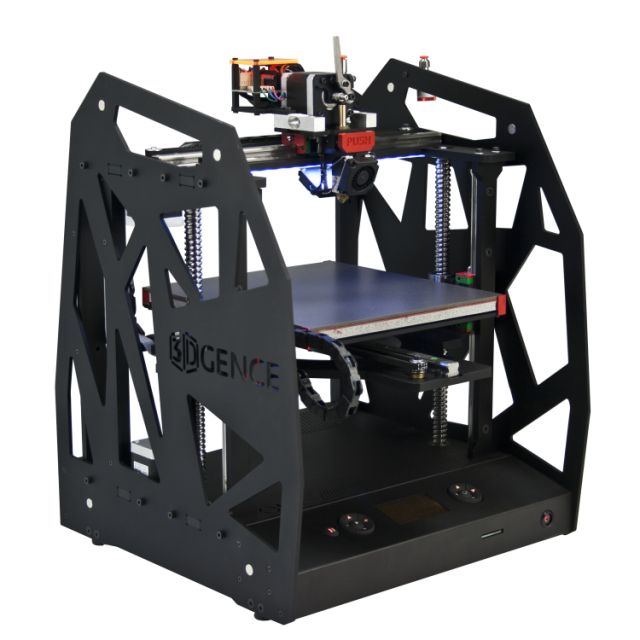 The process was then commercialized by DTM Corp. Laser sintering also provides a fairly high quality parts, although their surface is porous. But the models obtained by the SLS method are the most durable and this technology, in principle, can be used for small-scale production. True, the SLS plant is quite complex and expensive, and the production rate is only a few centimeters (height) per hour (plus several hours to heat up and cool down the plant). nine0003
The process was then commercialized by DTM Corp. Laser sintering also provides a fairly high quality parts, although their surface is porous. But the models obtained by the SLS method are the most durable and this technology, in principle, can be used for small-scale production. True, the SLS plant is quite complex and expensive, and the production rate is only a few centimeters (height) per hour (plus several hours to heat up and cool down the plant). nine0003
This is how the laser sintering machine works
This is how the SLS machine and parts made in it look like
In addition to good manufacturing accuracy and high strength of the "printouts" obtained, SLS has several other important advantages. First, laser sintering makes it possible to produce models with moving parts - for example, working hinges, push buttons, and so on. Secondly, special materials have been developed for the SLS process, allowing the direct production of metal parts. As a powder, steel microparticles are used here, coated on top with a layer of binding plastic. The sintering of the plastic takes place as usual, and then the "printed" part is fired in an oven. In this case, the plastic burns out, and the freed pores are filled with bronze. The result is an object consisting of 60% steel and the remaining 40% bronze. In terms of its mechanical characteristics, it surpasses aluminum and approaches classic stainless steel. In fact, SLS already now allows the production of full-fledged metal objects, and of arbitrary shape. In addition, there is a similar material with a ceramic or glass core - it can be used to make models that are resistant to high temperatures and aggressive chemicals. If only the process itself wasn't so expensive... nine0003
As a powder, steel microparticles are used here, coated on top with a layer of binding plastic. The sintering of the plastic takes place as usual, and then the "printed" part is fired in an oven. In this case, the plastic burns out, and the freed pores are filled with bronze. The result is an object consisting of 60% steel and the remaining 40% bronze. In terms of its mechanical characteristics, it surpasses aluminum and approaches classic stainless steel. In fact, SLS already now allows the production of full-fledged metal objects, and of arbitrary shape. In addition, there is a similar material with a ceramic or glass core - it can be used to make models that are resistant to high temperatures and aggressive chemicals. If only the process itself wasn't so expensive... nine0003
Laser sintering model and implementation
Lamination
Another laser 3D printing technology is lamination. It was developed by Helysis and sold under the brand name LOM (Laminated Object Manufacturing). Helysis itself ceased to exist in 2000, and several other manufacturers are now developing their equipment based on its technology. The essence of the technology is as follows - thin sheets of working material are loaded into the machine in turn, from which layers of the future model are then cut out by a laser. After cutting, the layers are glued together. Initially, special paper with a layer of adhesive was used as the material. However, thin plastics, ceramics and even metal foils can also be cut in this way. nine0003
Helysis itself ceased to exist in 2000, and several other manufacturers are now developing their equipment based on its technology. The essence of the technology is as follows - thin sheets of working material are loaded into the machine in turn, from which layers of the future model are then cut out by a laser. After cutting, the layers are glued together. Initially, special paper with a layer of adhesive was used as the material. However, thin plastics, ceramics and even metal foils can also be cut in this way. nine0003
The principle of operation of a three-dimensional laminating printer
Inkjet printing
Above, so to speak, three-dimensional laser printing systems have been described. However, inkjet printers are not far behind laser printers in this area. The simplest of the "inkjet" 3D printing processes is the so-called Fused Deposition Modeling (FDM). The idea of FDM is very simple - the dispensing head squeezes drops of heated thermoplastic onto the cooled base platform (almost any industrial thermoplastic can be used as a material).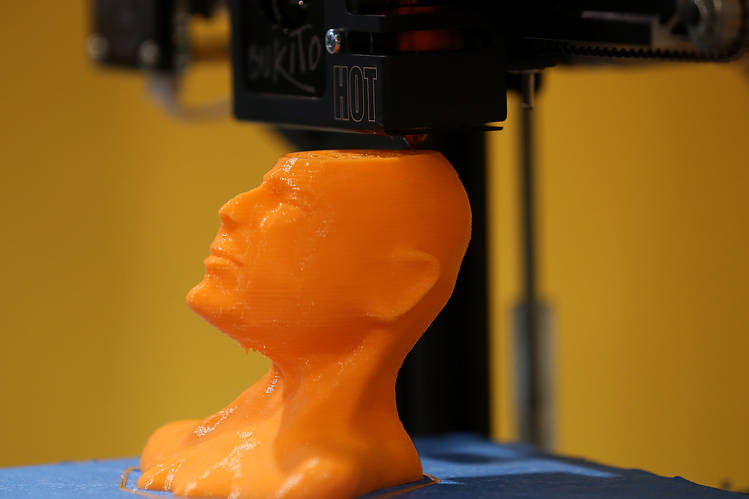 Drops quickly harden and stick together, forming layers of the future object (printing here is also carried out in layers). The FDM process makes it possible to produce quite large ready-to-use parts (up to 600 x 600 x 500 mm) with sufficiently high accuracy (minimum layer thickness 0.12 mm). The fundamentals of this technology were developed 19 more88 Scott Crump. The main manufacturer of FDM equipment is Stratasys.
Drops quickly harden and stick together, forming layers of the future object (printing here is also carried out in layers). The FDM process makes it possible to produce quite large ready-to-use parts (up to 600 x 600 x 500 mm) with sufficiently high accuracy (minimum layer thickness 0.12 mm). The fundamentals of this technology were developed 19 more88 Scott Crump. The main manufacturer of FDM equipment is Stratasys.
How the FDM machine works
By the way, NASA is considering FDM technology as a "space factory" candidate. After all, you cannot take an unlimited number of spare parts for all equipment on a space expedition. And it is unlikely that it will be possible to place a full-fledged mechanical workshop on a spaceship. But loading a couple of hundred kilograms of the original plastic and a compact machine that can make any part out of this plastic is easy. nine0003
FDM printer at work
Another technology clearly derived from inkjet printing is Objet Geometries' Polyjet. Here the inkjet head is used to print photopolymer plastic. The model, as usual, is printed layer by layer, and the resolution in the layer is 600 x 300 dpi, and the layer thickness can be reduced to as little as 16 microns. Each printed layer is polymerized into a hard plastic under the action of an ultraviolet lamp. In principle, all this is quite similar to SLA, but much faster, more accurate, simpler and more compact. At the same time, the price for Objet printers is at the level of $60K - several times less than for SLA installations. A similar system called InVison is also produced by 3D Systems, so the founding father of stereolithography also does not stand still. The price tag for this machine is about $40K - rapid prototyping systems have clearly become cheaper in recent years. nine0003
Here the inkjet head is used to print photopolymer plastic. The model, as usual, is printed layer by layer, and the resolution in the layer is 600 x 300 dpi, and the layer thickness can be reduced to as little as 16 microns. Each printed layer is polymerized into a hard plastic under the action of an ultraviolet lamp. In principle, all this is quite similar to SLA, but much faster, more accurate, simpler and more compact. At the same time, the price for Objet printers is at the level of $60K - several times less than for SLA installations. A similar system called InVison is also produced by 3D Systems, so the founding father of stereolithography also does not stand still. The price tag for this machine is about $40K - rapid prototyping systems have clearly become cheaper in recent years. nine0003
Objet Eden Rapid Prototyping System 260
And a skull model printed on it
And another "inkjet printing" technology, but using powder materials.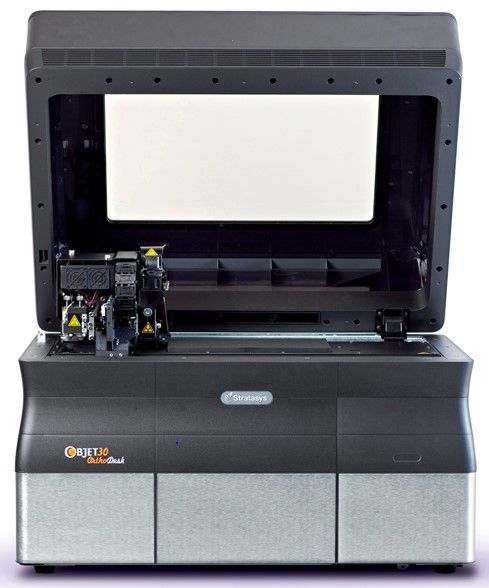 It was developed at the famous Massachusetts Institute of Technology, and the Z Corporation became the first and main manufacturer of equipment. Its 3D printers are relatively inexpensive (from $10K to $30K) and are significantly faster than the devices described above. The essence of the technology is as follows - a special inkjet head (by the way, adapted from Hewlett-Packard inkjet printers) sprays an adhesive onto the powder material. Ordinary gypsum or starch is used as a powder. In "splashed" places, the powder sticks together and forms a model. Printing, as in previous cases, goes in layers, and the excess powder is shaken off at the end. However, there is a significant difference - this printer can use an adhesive liquid with the addition of pigment dyes - which means it can print color models. The color printer from Z Corporation has 4 inkjet heads with ink-glue of primary colors, so that the resulting model can reproduce not only the shape, but also the color (that is, the texture) of its virtual prototype.
It was developed at the famous Massachusetts Institute of Technology, and the Z Corporation became the first and main manufacturer of equipment. Its 3D printers are relatively inexpensive (from $10K to $30K) and are significantly faster than the devices described above. The essence of the technology is as follows - a special inkjet head (by the way, adapted from Hewlett-Packard inkjet printers) sprays an adhesive onto the powder material. Ordinary gypsum or starch is used as a powder. In "splashed" places, the powder sticks together and forms a model. Printing, as in previous cases, goes in layers, and the excess powder is shaken off at the end. However, there is a significant difference - this printer can use an adhesive liquid with the addition of pigment dyes - which means it can print color models. The color printer from Z Corporation has 4 inkjet heads with ink-glue of primary colors, so that the resulting model can reproduce not only the shape, but also the color (that is, the texture) of its virtual prototype.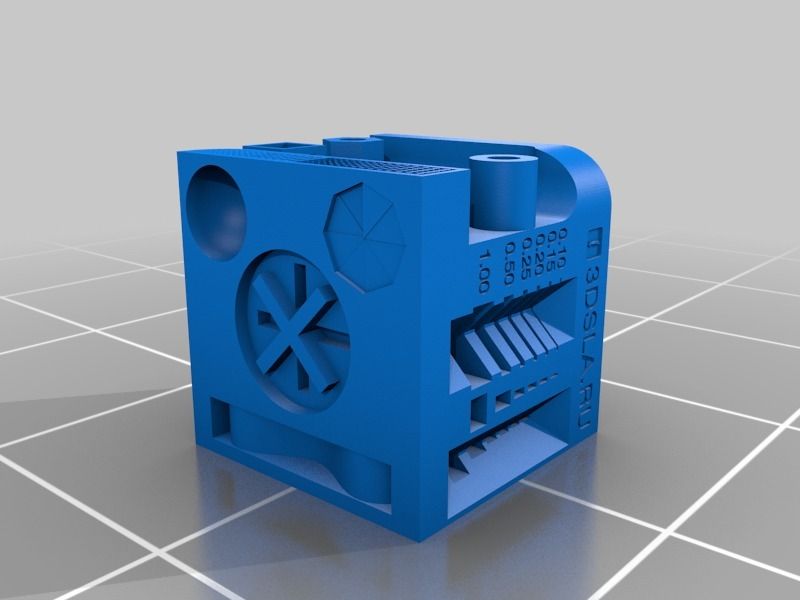 True, plaster models are not very strong, but they can immediately be used as molds for casting. As for the detailing of the "imprint", it is enough to look at the given photographs to appreciate it. nine0003
True, plaster models are not very strong, but they can immediately be used as molds for casting. As for the detailing of the "imprint", it is enough to look at the given photographs to appreciate it. nine0003
It remains only to shake off the excess powder from the finished print of the model.
Head and spare parts for it, 3D color printing
Z Corporation serial 3D printer
By the way, ProMetal is developing an interesting version of the above powder inkjet printing. Its proprietary manufacturing process called the Direct Metal Process works exactly the same way. Only instead of gypsum powder, metal powder is used. Next, the molded product is fired in a furnace, so that the powder either melts itself or binds with a more fusible metal (as in laser sintering of metal powders). Here is another method of direct production using 3D printing.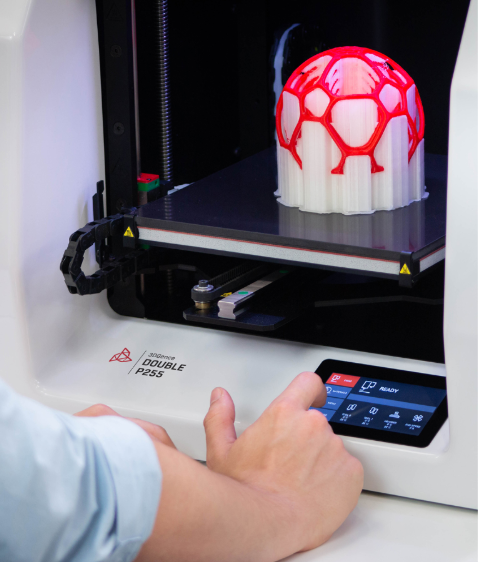 nine0003
nine0003
A part made of metal using ProMetal technology
In general, the prospects for 3D printing are very bright - this technology already saves a lot of time and effort for designers and engineers. And what will happen when it becomes available at the household level. Or, at least, in the form of an inexpensive service. Imagine that you can make any object that you can think of and draw on a computer ... All you have to do is draw a model, determine the material and send an order over the Internet. This is called Distance Manufacturing on Demand. In general, such a technology is simply bound to become mass-produced sooner or later - and then everyone will have their own personal mechanical factory on the table, replacing ordinary production in small things. In the same way that printers have replaced printing houses and typewriting bureaus. nine0003
Meanwhile, further developments in this area are in full swing, so you can always expect something new and unexpected. For example, a group of scientists from the University of California at Berkeley is developing a 3D printing technology that would allow both form and content to be created simultaneously. The content here means neither more nor less - electronic stuffing. Let's say the printer prints the plastic case of a mobile phone and prints all the electronics inside at the same time. In principle, there are already ways to print plastic semiconductor devices and the wires connecting them. It remains only to combine them with existing 3D printer technologies and a revolutionary breakthrough in modern production is ready. No, of course, this is not an easy task, but it is quite possible to solve it. nine0003
For example, a group of scientists from the University of California at Berkeley is developing a 3D printing technology that would allow both form and content to be created simultaneously. The content here means neither more nor less - electronic stuffing. Let's say the printer prints the plastic case of a mobile phone and prints all the electronics inside at the same time. In principle, there are already ways to print plastic semiconductor devices and the wires connecting them. It remains only to combine them with existing 3D printer technologies and a revolutionary breakthrough in modern production is ready. No, of course, this is not an easy task, but it is quite possible to solve it. nine0003
Or, for example, the developments of the University of Missouri, which allow using an inkjet printer to print original blanks of biological organs. In this case, clumps of cells of a given type are used as ink. Instead of "paper" there is a special bio-gel that fixes the position of cell clumps in space. The printing is done in several layers, so that the result is a three-dimensional construction of cells, which, in principle, can imitate any organ (after the cells grow, the gel dissolves, so that hollow structures can be obtained). Of course, printing a full-fledged organ for transplantation seems too difficult for now, but work is underway. nine0003
The printing is done in several layers, so that the result is a three-dimensional construction of cells, which, in principle, can imitate any organ (after the cells grow, the gel dissolves, so that hollow structures can be obtained). Of course, printing a full-fledged organ for transplantation seems too difficult for now, but work is underway. nine0003
Cellular ink printing system
For those who are interested in this topic, I can give some useful links. First, at this address is a collection of links to equipment manufacturers, technology developers and researchers. Moreover, the links are broken down by materials and production methods, so that a fairly clear picture of the state of affairs in this area immediately emerges. Secondly, at www.rpm-novation.com there is quite a good site dedicated to rapid prototyping technologies in Russian. And here you can find a good table with the characteristics of existing equipment. nine0003
nine0003
And finally, a bit of high art combined with exact science. Look at the photo - in front of you is a model (or, rather, a map) of our metagalaxy. This glass rectangle 7x7x10 centimeters in size depicts a piece of space 100x100x100 megaparsec. Everything is done in full accordance with the exact astronomical data. And the picture itself is burned into the glass with a laser. Also, in general, a kind of 3D printer. Made this wonderful thing by the artist Bathsheba Grossman. See more of her work at www.bathsheba.com. nine0003
Space in the thickness of the crystal, laser printing ... on glass
3d printers. Overview of achievements in 2013 / Sudo Null IT News
Prostheses for humans and animals, 3D printing of space structures, food and shoes, improved printing accuracy, new materials, new software.
A bunch of projects on crowdfunding platforms.
Well, pistols, where would we be without them.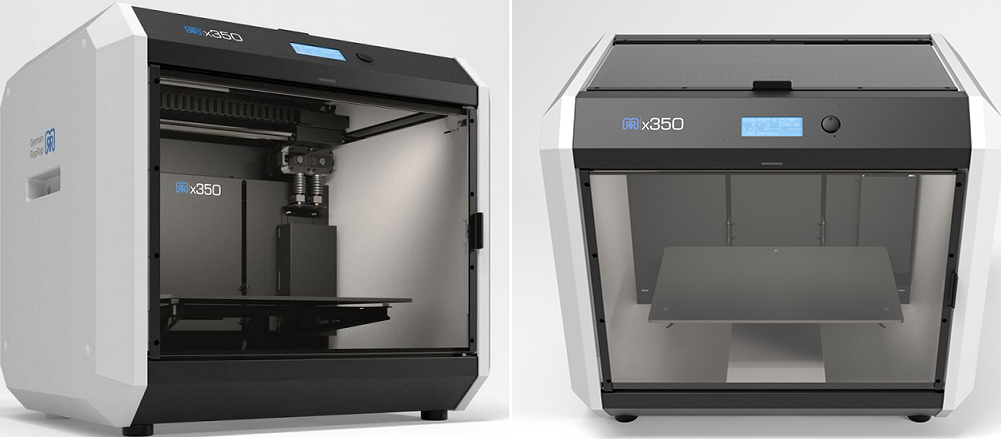
China, Japan, Australia, USA, Netherlands, Africa and Haiti, 3D printing seems to be everywhere in the world. nine0022 In 2014, 3D printing will go into space.
(Review of 3D printing achievements 2012 here) We read what we achieved for 2013 under the cut ( 54 photos ).
January
The Chinese printed a 5 meter one-piece aircraft part from titanium
0004 Smaller parts
Here's a plane that uses 3D printed parts
BioCurious hackerspace offers a self-assembly bioprinter based on HP 5150 inkje
(the first inscription where instead of ink - "Escherichia coli")
The European Space Agency is conducting experiments to build a shelter on the moon using a 3D printer
one and a half ton building block
February
A team of scientists from Scotland, for the first time, using a 3D printer, print three-dimensional tissue from stem cells
Article PDF
3D Printed Urbee 2 Is Ready for Production
change the way we make most things.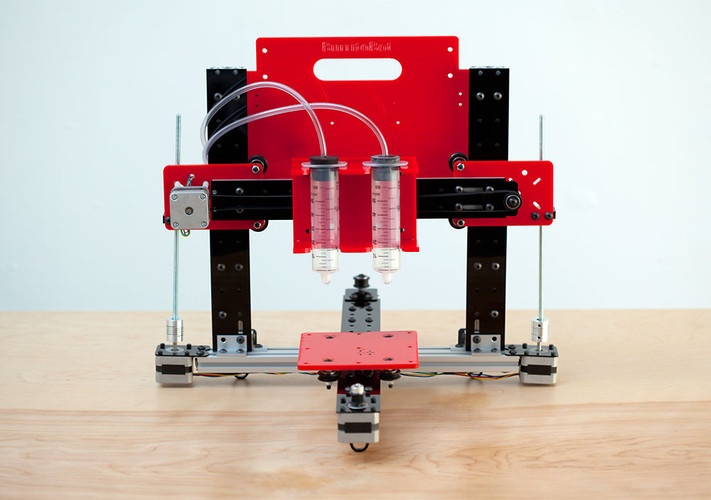 ”
”
In February, the hype began with 3doodler - a 3D pencil that can "draw in the air."
In just a few hours, they raised over a million dollars on Kickstarter.
Articles on Habré about this:
With the 3Doodler pen, you can draw three-dimensional objects directly in the air
Our answer is 3doodler. Assembled in 20 minutes
3Doodler is in a hurry to you! (Bonus: clone review)
In November, the "pencil" was delivered to Russia - the first (and last) review
Scientists print artificial ear
original article
Nike unveiled the world's first 3D printed football boot
4D printed. Self-transforming objects
4D printing video at TED
March
The government of Singapore intends to invest $500 million in the development of the 3D printing industry.
3D printing makes it possible to create low-cost implants, taking into account the anatomical features of patients0022
April
Oxford University scientists say their 3D printer is capable of creating materials with some of the properties of living tissue
A 3D scanner has been created that can capture images from a distance of 1 km
The Chinese government intends to invest $ 6.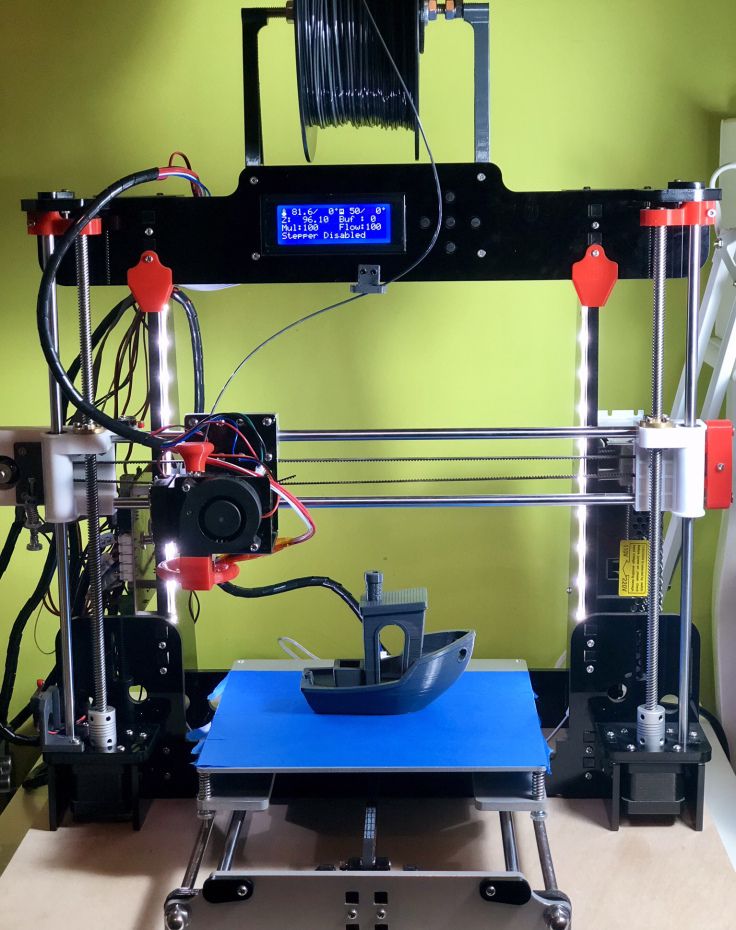 5M in the development of 3D printing technologies
5M in the development of 3D printing technologies
GE prints fuel injectors for aircraft engines
May
Liberator pistol: 100,000 downloads in two days
Printed ear capable of capturing radio frequencies
NASA awarded a $125K grant to develop a 3D food printer for astronauts who will fly into deep space
Saved the life of a child by printing a trachea
NASA plans to send 3d printer to the ISS August 2014
The Japanese printed a bacteria-sized carbon bunny
The Chinese showed the largest 3D printed part for a combat aircraft0022
June
British government invests £14.7m in 3D printing projects
Polymers create 'artificial bone' that is 22 times stronger than its composite component
Microsoft builds 3D printer support into Windows 8.1
Printed foot for a wounded duck
July
MIT develops software that makes it easier to work with composite materials
British children will learn robotics and 3D printing from the age of 5
Telegraph article
August
3D printed rocket engine passes NASA test, setting the stage for many innovations to reduce the cost of manufacturing parts Stem Cell Knee Joint Using 3D Printer
Scientists at MIT have developed a lightweight structure whose smallest details can be 3D printed and assembled like a Lego set. The intended use is in the construction of aircraft, spacecraft, dams and bridges. nine0022
The world's first full-scale architectural installation Echoviren
September
Breakthrough technology - printing with dissimilar materials, both organic and inorganic materials: ceramics, metal, plastic and even biological cells
Developers from Disney introduced software that will allow you to create and print mechanical toys on a 3D printer
$100 3D printer - The Peachy Printer
Scientists from Australia created a model of the Leaning Tower of Pisa using a hand-held 3D scanner
Scientists from the Netherlands created reproductions of Rembrandt and Van Gogh paintings using a 3D scanner and 3D printer
October
UK provides £500K grant to equip 60 schools with 3D printers
HP plans to enter the 3D printing market in mid-2014
Scientists have discovered that natural components (vitamin B2) can be used in the 3D printing process to create implants
on Haiti 3D printer
Microsoft offered a technology that can turn any smartphone into 3D scanner
November
The program for encryption of 3D models
Despiratinum biocrats for the press
9000 metal gun printed on a 3D printer
Scientists printed 20 layers of liver tissue that lived for 40 days
article on Habré
Revolution in the textile industry
Desktop metal 3D printer
Progress in the manufacture of lithium-ion batteries using 3D printers.




